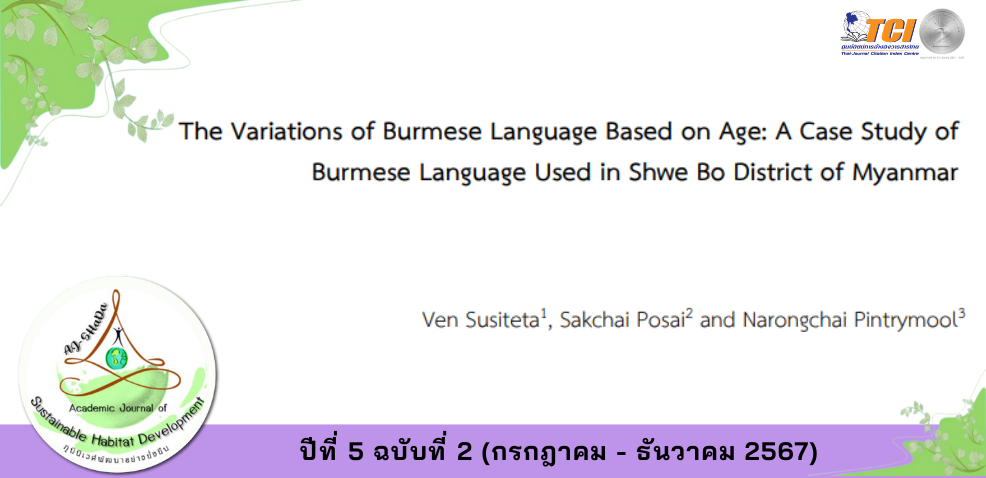The Variations of Burmese Language Based on Age: A Case Study of Burmese Language Used in Shwe Bo District of Myanmar
Main Article Content
บทคัดย่อ
This research aimed to: 1) examine age-based variations in the Burmese language used in Shwe Bo District, Myanmar, and 2) analyze these variations. A mixed-methods approach was employed, combining quantitative and qualitative techniques. Data were collected using questionnaires from 226 respondents and in-depth interviews with 10 villagers. Quantitative data were analyzed using Frequency, Percentage, Mean, and Standard Deviation (S.D.), while qualitative data were analyzed through content analysis.
The findings revealed that 100 respondents were male and 126 were female. Most respondents were aged 18–30 (90 individuals, 39.82%), followed by 31–40 years (100 individuals, 44.24%), and over 40 years (36 individuals, 15.92%). For the first objective, participants reported significant challenges with age-based language variations in the Burmese language. The average score was high (=3.56, S.D.=0.947). For the second objective, most participants strongly agreed with the analysis of variations, resulting in a very high average score (
= 4.28, S.D.=0.458).
Article Details

อนุญาตภายใต้เงื่อนไข Creative Commons Attribution-NonCommercial-NoDerivatives 4.0 International License.
เอกสารอ้างอิง
Indaka. (2020). A Phonological Study of Burmese Language Spoken in Hintharton Village, Wakema Township, Myaungmya District, Ayeyarwady Region of Myanmar. (Thesis of M.A. (Linguistics). Mahachulalongkorn-rajavidyalaya University, Phra Nakhon Sri Ayutthaya.
McIntosh, E. & Shaw, J. (2017). Exploring the Positive Case for Resilience. UK: University of Bolton.
McMillan, J.H. & Reed, D.F. (1994). At-Risk Students and Resiliency: Factors Contributing to Academic Success. The Clearing House, 67(3), 137-140.
Taormina, R.J. (2015). Adult Personal Resilience: A New Theory, New Measure, and Practical Implications. Psychological Thought, 8(1), 35-46.
Zellner, M. (1970). Self-esteem, Reception, and Influence ability. Journal of Personality and Social Psychology, 15(1), 87-93.


